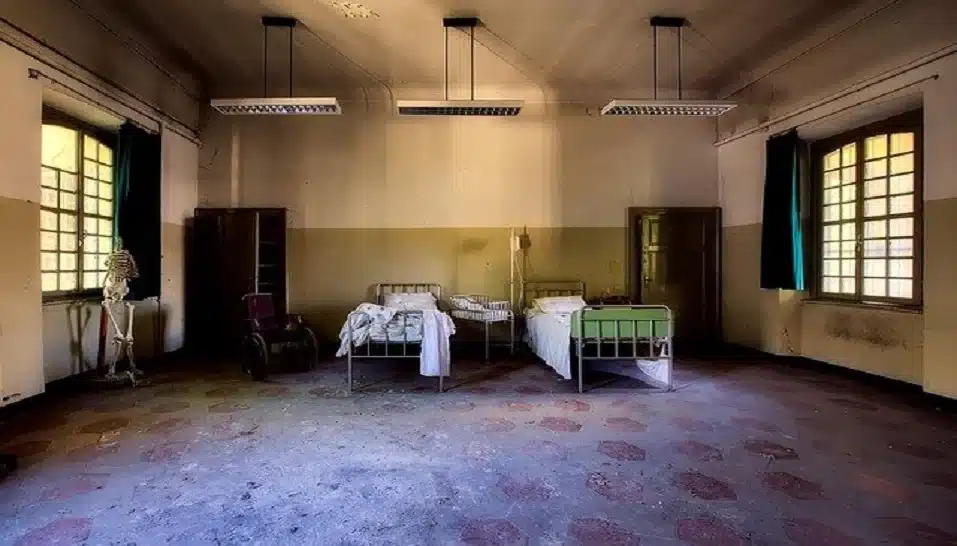The COVID-19 pandemic has inflicted a major setback in India’s battle against TB. This World TB day, HealthLEADS looks into the country’s struggles, recovery, and ambitious elimination goals.
Over 182 years since Robert Koch announced his discovery of the TB causing bacteria, millions are still dying of the disease. Even as COVID-19 overtook TB as the most fatal infectious disease in 2020, deaths due to TB remained higher among the low and middle income countries. And as COVID vaccines bring down mortality of that disease, TB continues to rage on, killing roughly 4000 people every day.
TB was declared a global health emergency by the World Health Organization in 1993, and continues to remain so. Geneva based Stop TB Partnership, was established in 2000 and administered now by UNOPS, also aims, with its 1500 partner organizations, at eliminating tuberculosis as a public health problem. The United Nations Sustainable Development Goals (SDGs) include ending the TB epidemic by 2030. This is five years ahead of WHO’ End TB target of 2035.
As the country with nearly a third of the world’s TB burden, India’s efforts to control and eventually eliminate TB are crucial to these global efforts. The country’s national TB program, earlier christened National TB Control Program, was relaunched as the National TB Elimination Program (NTEP). With its massive burden, India’s goal to eliminate TB by 2025 seemed ambitious. Continued efforts had shrunk the gap between the country’s estimated case burden, and the number of cases officially diagnosed. Even then an estimated 235,185 cases went undetected in 2019, and the disease had a case fatality rate (number of deaths divided by the number of cases) of 17 per cent, killing over 436,000. As the WHO noted in its press brief of March 22, “the pandemic has greatly exacerbated the situation.”
The COVID shock
When the COVID-19 pandemic struck the high-TB burden countries at the start of 2020, all TB-centric public health machinery faced significant roadblocks. Expertise and resources were diverted to contain the novel coronavirus infection. TB hospitals were repurposed and service delivery points faced closures. Lockdown also inflicted heavy disruptions in access to diagnostics and treatments.
Data with the WHO estimates that globally, 1.4 million fewer people received TB care in 2020, as compared to 2019 – a drop of 21 per cent. Case reporting also saw a sharp fall – of 28 per cent – from 6.3 million in 2019 to 4.9 million in 2020.
The Stop TB Partnership and USAID data suggests a decline of 1 million of 2020’s missed diagnoses and treatment enrollment happened in nine high-burden countries, including India. Nikshay, the country’s web based TB reporting platform, saw a sharp drop in case notifications in 2020 – by as much as 58 per cent.
“The impressive gains in recent years in reducing the people missing from TB care have been reversed,” reads the media brief released by the Stop TB Partnership on March 20.
How bad does it look?
WHO’s modeling and analysis of the impact of missed case detentions and disruptions fears that over half a million people may have died of TB in 2020, merely because they were unable to obtain a diagnosis. Modeling analysis developed by the Stop TB Partnership, in an effort to address the potential impact of lockdowns, estimates that India could face an excess burden of nearly 1.8 million cases and more than half a million deaths between 2020 and 2025. These are conservative numbers as they are based on a recovery level that has not been achieved yet. For every additional month India takes to reach pre-pandemic levels of TB care, the analysis adds over 140,000 additional cases and 40,000 deaths in the 2020-2025 period.

While these models do consider the potential benefits of physical distancing on TB as well, there are several additional issues that are not addressed. Direct interactions between TB and COVID are not taken into consideration. Evidence suggests an increased mortality risk in people with TB – three times greater for those infected with COVID-19 compared to those without the co-infection. The models also do not include potential increase in TB burden due to socioeconomic changes. COVID induced economic disruption has pushed many into poverty, thus putting them at greater risk.
How do we recover from this?
TB burden has been impacted so adversely that resumption of normal pre-pandemic levels of TB care will not suffice. This additional pool of cases will only add to disease transmission in the years to come. “Supplementary measures are required,” says the Stop TB Partnership brief, “with a focus on reducing the prevalent pool.” The WHO notes that restoration and improvement of TB screening is one way to address this. A set of new guidelines were released by WHO to aid countries in these efforts. This follows the 10-point priority recommendations outlined the United Nations Secretary General’s Progress Report of 2020.
India has shown a hint of recovery, significantly better than other high-burden countries. Case notifications have not reached pre-pandemic levels, but it fares slightly better among the high-shortfall countries. Identifying the crisis early, authorities had a rapid response plan ready by August of 2020 – integrating TB and COVID-19 in all outreach efforts, including bidirectional screening of TB and COVID-19. High levels of political commitments are judged to be “must” for successful recovery of TB responses. This has been a feature in India’s battle against TB, even if its campaign goals may seem too ambitious.
Didn’t India already have issues in TB care?
Drug resistance is a growing problem. Over 0.5 million were reported to have developed RR (Rifampicin Resistant), MDR (Multidrug Resistant) and XDR (Extreme Drug Resistant) TB in 2019. India’s burden remains the highest again. The country reported 66,255 cases of MDR/RR and 2323 cases of XDR. Newer treatment protocols are continuously devised to treat drug resistant cases, most recent of which was released by the WHO on March 22.
There is also the problem of a shortfall in people starting treatments, as only 85 per cent of MDR/RR and 83 per cent of XDR patients started treatments. Missed or incomplete treatments contribute to the infection’s resistance to drugs, and 2020’s disruptions may only aggravate this problem.
So where do we stand now?
India’s ambitious goal to eliminate TB by 2025, ten years ahead of WHO’s target, has raised eyebrows in the past. An article published in 2017 highlighted that while the goal does reflect strong commitments, 2025 is just too short a timeframe. The authors noted that “India is lagging behind in its national decline rate,” and that “if India wants to end TB by 2025, the rate of decline of incidence of TB needs to be more than 10% – 15% per year over the next 8 years.” India’s decline rate has been a paltry 3.7 per cent between 2017 and 2019. Meeting the 2025 elimination goals, therefore, seemed far fetched, and COVID has only made it more difficult.
“The clock is ticking,” read the slogan for this year’s World Tuberculosis Day. It sure is.

















